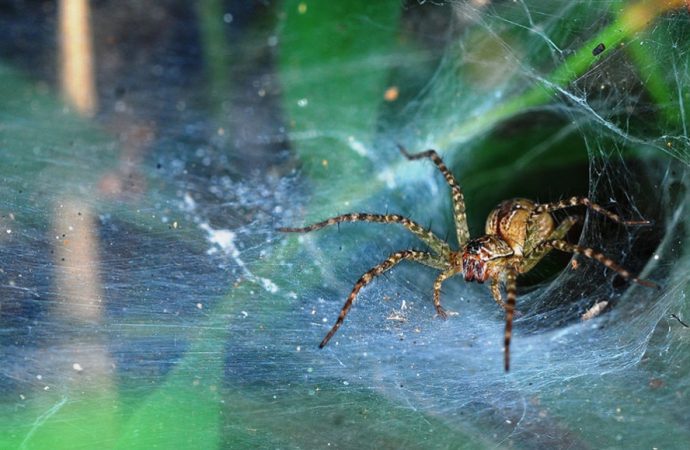Bacteria key to decomposition can’t get at the silk’s nitrogen, a nutrient needed for growth
Source: Science News
From spooky abandoned houses to dark forest corners, spider webs have an aura of eternal existence. In reality, the silk threads can last hours to weeks without rotting. That’s because bacteria that would aid decomposition are unable to access the silk’s nitrogen, a nutrient the microbes need for growth and reproduction, a new study suggests.
Previous research had hinted that spider webs might have antimicrobial properties that outright kill bacteria. But subjecting the webs of three spider species to four types of bacteria revealed that the spiders use a resist strategy instead, researchers report October 23 in the Journal of Experimental Biology.
The scientists “challenge something that has gone significantly overlooked,” says Jeffery Yarger, a biochemist at Arizona State University in Tempe, who wasn’t involved in the research. “We just assumed [the silk] has some kind of standard antimicrobial property.”
Spiders spin strings of silk to trap food, wrap their eggs and rappel. Their silk webs can sport leaf debris for camouflage amidst tree canopies or leftover dead insects for a meal later. These bits and bobs lure bacteria and fungi involved in decomposition to the web, exposing the protein-rich web silks to the microbes.
“But [the microbes] don’t seem to affect spider silk,” says Dakota Piorkowski, a biologist at Tunghai University in Taichung, Taiwan.
To check if the silk was lethal to bacteria, Piorkowski’s team placed threads from three tropical spider species — giant golden orb weaver (Nephila pilipes), lawn wolf spider(Hippasa holmerae) anddome tent spider (Cyrtophora moluccensis) — in petri dishes and grew four types of bacteria, including E. coli, in perpendicular lines across the silk. “The idea is that if the silk has antibacterial properties, you should see no growth between the piece of silk and … bacteria,” Piorkowski says.
There was no evidence of this “clear zone” of dead bacteria in spots where the bacteria came in direct contact with the silk, the researchers found. So the team then tested if the silk kept hungry bacteria at bay by blocking them from its nitrogen reserves. Wetting the silk threads with an assortment of nutrient solutions showed that the bacteria readily grew on all three types of spider silk when extra nitrogen was available. That indicated that the bacteria are capable of growing on and possibly decomposing the silk, as long as the threads themselves aren’t the only source of nitrogen.
The researchers hypothesize that an outer coating of fat or complex protein on the silk may block bacteria’s access to nitrogen.
Randy Lewis, a spider silk biologist at Utah State University in Logan, cautions against ruling out antibacterial features in all spider silks, though. Underground webs of tarantulas, for example, can face environments rife in microorganisms compared with that experienced by aerial web-spinning spiders, he says, and may need the extra protection.
Source: Science News

































Leave a Comment
You must be logged in to post a comment.